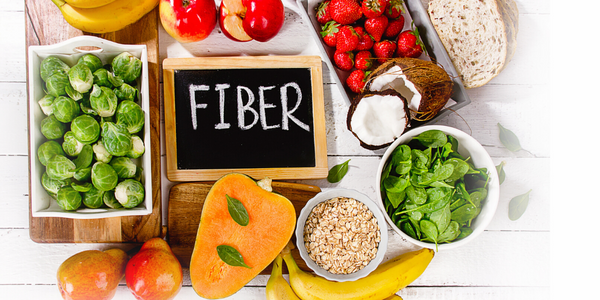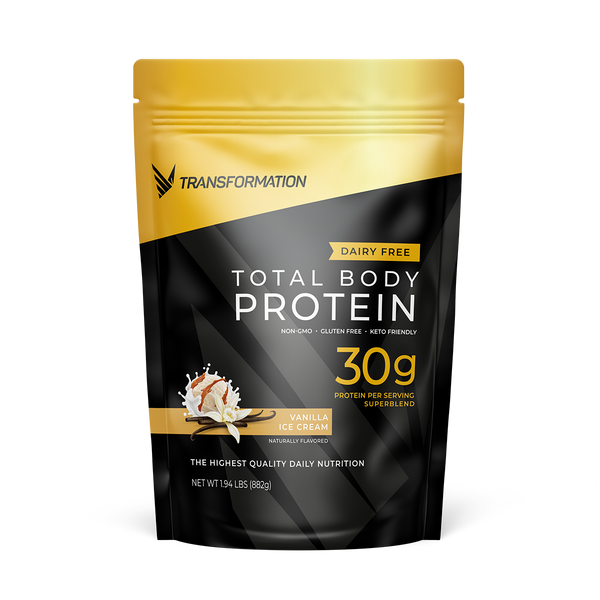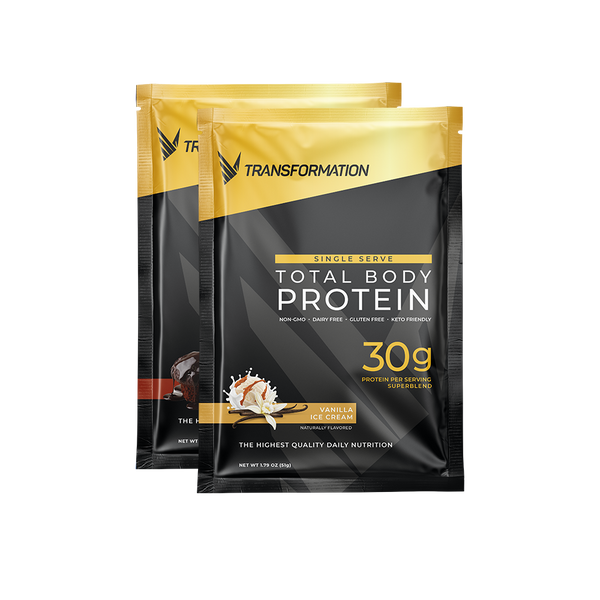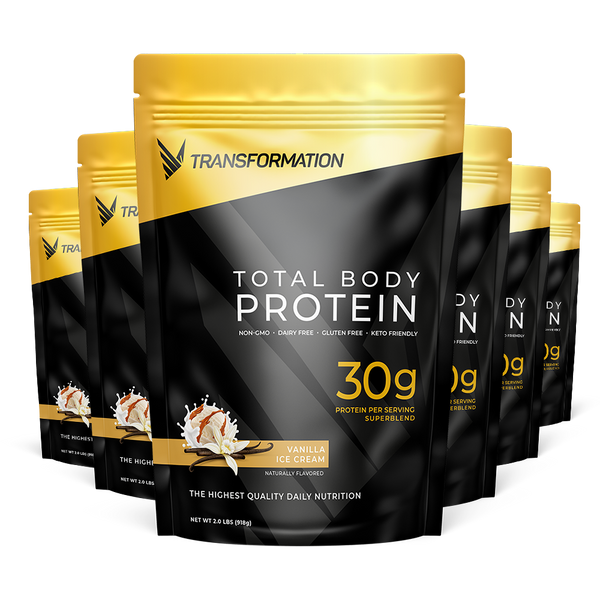
Is Too Much Fiber Bad for Your Health?
Fiber is often chalked up as something to worry about only as you age, but the list of benefits of fiber is long and worth paying attention to now because it’s about much more than just bowel movements. It can lower your risk for heart disease, stroke, and diabetes, improve the health of your skin, and help you lose weight. It may even help prevent colon cancer.
Fiber is the part of plant-based foods (grains, fruits, vegetables, nuts, and beans) the body can’t break down, passing through the body undigested, keeping your digestive system clean and healthy, easing bowel movements, and flushing cholesterol and harmful carcinogens out of the body.
The health benefits of fiber are many.
Skin health: Yeast and fungus are excreted through the skin triggering outbreaks or acne. Eating fiber, especially psyllium husk, can flush toxins out of your body, improving the health and appearance of your skin. And because fiber naturally scrubs and promotes the elimination of toxins from your G.I. tract, consider it useful for a full-body toxin flush.
Gut health: Your gut bacteria gobbles up fiber that has fermented in your G.I. tract, producing short-chain fatty acids that have a host of benefits such as lowering systemic inflammation, which has been linked to obesity and nearly every major chronic health problem.
Diabetes: A diet high in fiber—particularly insoluble fiber —can lower your risk for type 2 diabetes. If you already have diabetes, eating soluble fiber can slow the absorption of sugar and improve your blood sugar levels. Going hand-in-hand with keeping weight within a healthy range to avoid incidence of diabetes, people who get more fiber tend to be leaner overall.
Reduce risk of cancer: Every 10 grams of fiber you eat is associated with a 10 percent reduced risk of colorectal cancer and a 5 percent fall in breast cancer risk, says a study published in the Annals of Oncology. Diets rich in high-fiber foods are also linked to a lower risk for other common digestive system cancers, including stomach, mouth, and pharynx.
Heart health: For every 7 grams of fiber eaten daily, your risk of heart disease drops by 9 percent, confirmed in dozens of studies. That's partly due to fiber's ability to soak up excess cholesterol in your system and ferry it out before it can clog your arteries. Soluble fiber in particular is an important element of any heart-healthy diet. Eating a diet high in fiber can improve cholesterol levels by lowering LDL (bad) cholesterol. A high-fiber intake can also reduce your risk for metabolic syndrome, a group of risk factors linked to coronary heart disease, diabetes, and stroke. Fiber can also help to lower blood pressure, reduce inflammation, improve levels of HDL (good) cholesterol, and shed excess weight around the abdomen.
In general, females 19-50 should get 25 grams of fiber per day, and males 35 grams. Females over 50 can decrease this to 21 grams and males to 30 grams per day after 50.
INSOLUBLE FIBER vs. SOLUBLE FIBER
Fiber comes in two varieties: insoluble and soluble.
Insoluble fiber does not dissolve in water. It includes plant cellulose and hemicellulose. Insoluble fiber helps move material through your body to make you feel slimmer. It is the bulky fiber that helps to prevent constipation, and is found in whole grains, wheat cereals, and vegetables such as carrots, celery, whole-wheat flour, nuts, beans, cauliflower, green beans, potatoes and tomatoes.
Soluble fiber dissolves in water, includes plant pectin and gums, and helps control blood sugar levels and reduce cholesterol. Soluble fiber makes you feel fuller longer, thus curbing overeating. The best sources of soluble fiber include oats, barley, oatmeal, beans, nuts, peas, Psyllium, and fruits such as apples, berries, citrus fruits, and pears.
It’s not that either type of fiber is better than the other; it’s more about incorporating more of these foods into your diet to help foster a regular digestive system, reducing the risk of developing type 2 diabetes, and helping you maintain a healthier weight.
IS IT POSSIBLE TO HAVE TOO MUCH FIBER?
Though you likely already have a good understanding of proper fiber intake, it’s time to sort out some myths and provide some best practices.
With the general recommended daily fiber intake is set at around 25-35 grams depending on gender, most people eating a standard whole-foods-based diet is unlikely to exceed this amount by much. But for people that do exceed this limit, it may not be good for your body.
Signs of too much fiber include
- Constipation: An over-consumption of fiber may cause constipation through a build-up of undigested matter in the digestive tract.
- Nutrient Malabsorption: Insoluble fiber - whole grains in particular- can reduce our absorption of certain nutrients because they are sources of antinutrients like phytic acid. While phytate can have some beneficial effects on our body, it’s also capable of inhibiting the absorption of iron, calcium, and zinc.
- Gas and Bloating: Gassiness and bloating are two of the most common complaints against a high fiber diet, especially if consuming a lot of fiber over a short period of time. A few vegetables with a meal is perfectly healthy, but massive amounts can cause gassiness and abdominal bloating.
- Abdominal Cramping: The gases released by the breakdown of large amounts of fiber cause a build-up of gases in the colon that exert pressure on the colon walls, which leads to annoying stomach cramps.
- Intestinal Blockage: An intestinal blockage is rare, but coupled with inadequate chewing, a serious overload of fiber can lead to bowel obstruction.
- Dehydration: When intaking larger amounts of dietary fiber, it’s important to ensure sufficient water intake because soluble fiber absorbs water in the digestive tract, which increases the body’s hydration needs.
- Acid Reflux and GERD: You may recognize gastroesophageal reflux disease (GERD) as heartburn or acid reflux.Higher amounts of fermentable carbohydrate such as fiber may play a role in symptoms of GERD.
FINDING YOUR BALANCE TO ACHIEVE OPTIMAL HEALTH
A balance of fiber and protein is ideal for overall health. Consuming protein helps build and maintain lean muscle which increases your metabolism and helps you feel fuller longer. Base your meals around complete proteins like eggs, chicken, and fish. Sparingly sprinkle incomplete proteins like nuts, seeds, and grains into snacks or on top of a salad. To round out your high-protein game, choose a complementary protein like rice and beans. Similar to a high-fiber diet, consuming more protein can decrease your risk for heart disease, but you’ll need to steer clear of red meat. Aim for vegetable proteins like grains, nuts, seeds and legumes, which are low in saturated fat and cholesterol.
A perfect balance of fiber and protein will lead to a healthy diet, helping you achieve the benefits from both, including increased metabolism, muscle growth, healthy digestive system, reduced risk of disease.
Understanding your body’s needs based on your personal profile is key, and we know it’s not always possible to eat perfect all the time, so in order to achieve that perfect balance, you may need to leverage the power of supplements.
Transformation Protein can help you add fiber to your diet:
- Just one serving has a whopping 7 grams of fiber
- Contains Sunfiber, a gut-loving prebiotic fiber that promotes healthy digestion
- Helps with weight management, as Sunfiber moves food through your digestive tract regularly, which keeps you feeling healthy and less hungry.
Even better, the Transformation Protein blend is a complete protein powder that includes plant-based protein, all 9 amino acids and 30 grams of protein in every low-calorie serving. If you consume Transformation Protein powder in combination with Super Greens—which provides a full serving of vegetables—that can also give your body a great immunity boost and the Super Greens will alkalize the protein (which helps maintain muscle strength).
Remember, in general, females should consume 20-25 grams of fiber daily and males 30-35 grams of fiber. Women should aim for 46 grams of protein a day and around 56 grams of protein each day for men. Combine this with your favorite workouts to build a healthy digestive system, decrease your chance of preventable diseases, and create a body of lean muscle.






